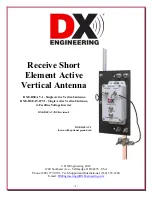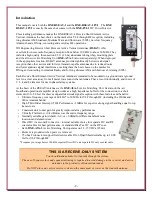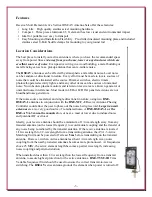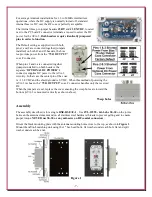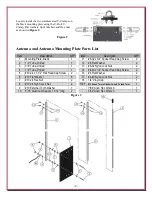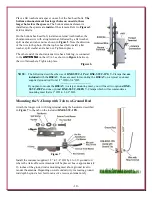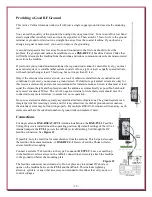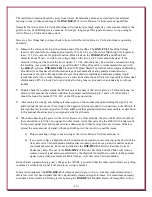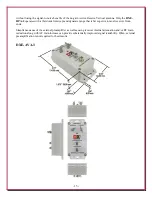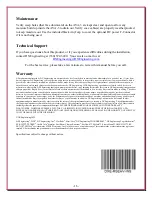
- 12 -
Providing a Good RF Ground
This Active Vertical Antenna works well with just a single copper ground rod used as the mounting
rod.
You can test the quality of the ground when using only one ground rod. Tune in an AM or low band
steady signal that is not Skywave and note the signal level. Then, attach 15 feet of wire to the ground
terminal or ground rod, laid out in a straight line away from the coaxial feedline. If you observe a
change in signal or noise level, you need to improve the grounding.
A second rod spaced a few feet away from, and connected to the first one should correct the
problem. If a good ground cannot be established, use a
DXE-RFCC-1
Feedline Current Choke that
will further decouple the feedline from the antenna and reduce common mode current and associated
noise from the feedline.
If you locate your ground mounted antenna where ground rods cannot be used effectively, you must
use a radial system. A suitable radial system consists of four, eight or twelve equally spaced radials,
with each radial being at least 15 feet long, but not longer than 20 feet.
Only if the antenna is located over rock, on a roof, or otherwise installed where conductive soil
conditions do not exist, you must use a ground screen. Welded-wire galvanized screens are okay for
this receive antenna only and are not recommended for transmit antennas. Screen radius must at least
equal the element height and be placed around the antenna as symmetrically as possible, but should
not exceed a radius of 20 feet. The AVA-3 negative terminal or its radial system should never be
connected to any metal structure, to assure low noise operation.
Do not use elevated radials or grossly asymmetrical radial configurations. The ground system is an
integral part of this receiving system, and if it is asymmetrical or exhibits pronounced resonances,
the antenna system may not function properly. For multiple RSEAV Antennas used in an array, each
element must have the identical number of ground rods and radials, if used.
Connections
For single antenna
DXE-RSEAV-1FVI
Antenna installations, the
DXE-FVI-1
Feedline
Voltage Injector is installed near the operating position. By default settings of the AVA-3
internal jumpers, the
FVI-1
powers the
AVA-3
Active Matching Unit through the RF
feedline connection. See
Figure 12
.
If possible, bury the feed line for some distance from the antenna. This helps to decouple
the feedline from unwanted noise. A
DXE-RFCC-1
Receive Feedline Choke will also
ensure feedline decoupling.
Connect a suitable 75 Ω feedline to the type F connector
OUTPUT
. Leave a small loop
in the feedline to relieve stress on the
AVA-3
connection and securely attach the feedline
to the ground rod below the mounting plate.
Figure 12
The feedline connectors must remain dry. Do not place any intentional DC shorts or
opens on the feedline between the
FVI-1
and the
AVA-3
. This includes lightning
arrestors, splitters, or any other accessory not intended for feedlines that carry power or
control voltages.

